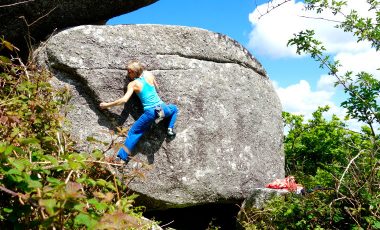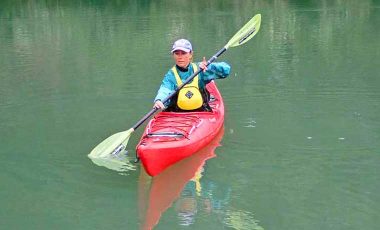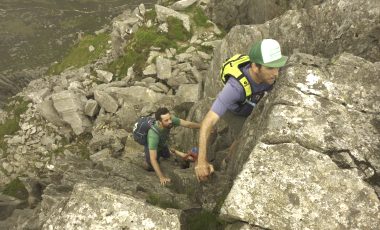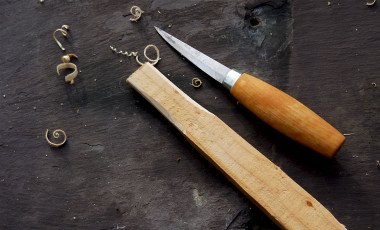Keen to try rock climbing but …
You’re confused by knots?
You can never untangle ropes?
You find long walks tiring and pointless?
You’re scared of heights too?
That’s all okay – looks like you were born to boulder!
This article will answer the question, what is bouldering? It will explain what it is and how to do it. It is aimed at bouldering for beginners, with no experience of rock climbing, as well as those who’ve only bouldered indoors, but are keen to venture outdoors.
- What is bouldering in rock climbing?
- Bouldering lingo
- Bouldering grades
- How to start bouldering and where to go
- What is bouldering equipment?
- How to boulder: tips and techniques
What is bouldering in rock climbing?
Bouldering is a type of rock climbing that comes under the narrower category of unroped climbing. In bouldering you climb short routes above crash pads that offer protection from falls. It can be done indoors on plastic holds attached to the wall, or outdoors on real rock, using natural features to get to the top.
An individual bouldering route, usually around 4-5m high, tends to be completed in seconds rather than minutes or hours. It’s therefore more comparable in athletics terms to the 60m sprint than the 1500m or marathon. But that doesn’t mean it has to be an explosive activity. Bouldering often requires more balance and flexibility than outright power. If you’re already into yoga, then you will start bouldering with a distinct advantage.
Bouldering lingo
Rock climbing in general has many specialist terms, but many of them either do not apply to bouldering or can be picked up naturally by spending time around climbers. However, there is one bouldering term that should be introduced before we continue.
“Problem”: this is bouldering lingo for the route from the bottom to the top. It’s called a problem because it is something that needs to be solved, and might need many attempts before you crack it. For indoor bouldering, the holds that are allowed to be used for a bouldering problem will be in the same colour. Whereas for outdoor bouldering, you will need to follow the line drawn on a photo of the boulder in a guidebook.
Bouldering grades
Grades in bouldering are used to distinguish degrees of difficulty.
There are two main systems of bouldering grades: the Fontainebleau system, abbreviated to Font or ‘f’, and the V system. Different climbing walls and different guidebooks on outdoor climbing areas will have a preference for one or the other. But they both follow the simple rule: the higher the accompanying number, the harder the climb.
The Font system begins at f3 and goes up to f9. The grades are also subdivided by adding a ‘+’ to the number, and ‘a’, ‘b’ or ‘c’ at f6 and above. Beginners should be focusing on the easiest five grades: f3, f3+, f4, f4+ and f5.
The V system is more straightforward with the majority of the grades, running from VI to V17, having no additional letters or symbols. The exception though is at the lowest grades; the easiest five, which correspond to the easiest Font grades, are: VB, V0-, V0, V0+, V1.
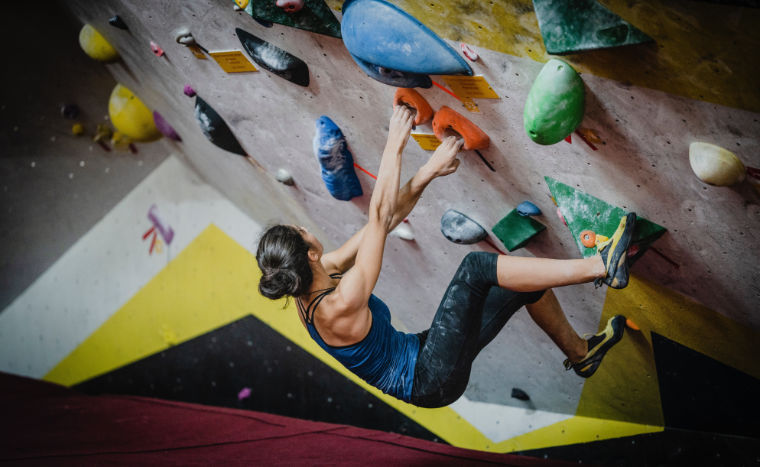
How to start bouldering and where to go
Learning to boulder indoors is the most common route into the sport. It enables you to learn the basic climbing techniques in a safe environment where any falls are cushioned by large padded mats across the floor.
When you go to an indoor climbing gym, you will receive an induction from a qualified instructor. The instructor will make sure you understand the importance of down climbing rather than jumping off – it’s safer – and not climbing above another climber. You can also hire climbing shoes, which saves the expense of buying a pair and being stuck with them if you decide it’s not the sport for you … but this is unlikely to happen!
To find your nearest indoor wall, there are a few directories that will point you in the right direction:
You shouldn’t have to travel far. There are many around, and the number is on the rise. Indoor climbing is a thriving sport, especially since its inclusion in the Tokyo Olympics.
Climbing walls are also very sociable places, where new climbers are always welcomed. You’ll find it easy to chat with fellow climbers of whatever ability and, unlike many gyms, you won’t be intimidated by muscle-bound behemoths, flexing in front of the mirror; there are no mirrors in climbing walls.
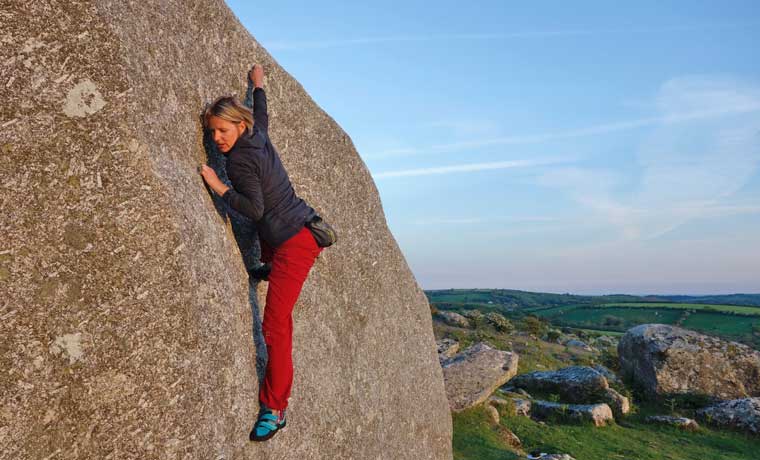
From indoor to outdoor bouldering
Having bouldered indoors for a few months, and gained strength and confidence, now might be the time to try real rock. Or you could be a scrambler or trail runner, and having seen boulderers in action with their beanie hats and brightly-coloured crash pads, you’re keen to learn more.
The easiest way to make the transition safely from indoor to outdoor bouldering is to accompany someone with experience, be that a friend or a paid instructor. They will take you to a collection of boulders with easier problems and good landings. They will already have a crash pad or two that you can use. They will place the pads in the best arrangement at the base of the problem, and then show you how to climb it safely and efficiently.
However, all of the above can be learned on your own through research, observation, being cautious, and lowering your expectations. To take each in turn:
Research
Buying a bouldering guidebook of the area you wish to climb will enable you to flick though the pages to find the crag with the most abundant low-grade bouldering problems. To offer an example, if you live in or around Sheffield, I would recommend Burbage South Boulders as a perfect spot for beginners. And this crag can be found in the Peak Bouldering guidebook.
If you prefer to go online and use your phone at the crag, I recommend the Rockfax App, which has detailed descriptions and images of all the major bouldering areas around the UK and abroad.Observation
Many of the new skills you pick up in life are not learned through reading; they are acquired through observing others do it, and then trying it yourself. The same goes for bouldering.
When you arrive at a bouldering spot, watch carefully what other boulderers are doing. If they are just sitting around on their mats – as they tend to do! – you might have to wait awhile. When they do start climbing, watch which holds they use and how they use them, and the position of their bodies as they move upwards. You can also ask them about the problems you intend to try, and whether they have any helpful hints.Being cautious
Bouldering outdoors comes with greater risk. The problems are often higher than indoors and the crash pads can seem quite small the nearer you get to the top. You will also need to top out, meaning finishing the route so that you’re standing on the top; an indoor bouldering problem on the contrary ends with your hands on the highest hold.

Topping out can feel quite scary until you get used to it, so it’s best to practise on an easy problem at low height. Also, having a spotter will help – this is bouldering lingo for a person at the bottom of the climb who will help you land safely, not by catching up, but by making sure you don’t roll back off the pad.
If at any moment you feel unsure about committing to a problem or committing to the top out, then don’t. Step away. Think about it. Perhaps try to find another crash pad to borrow. Then try again if you want to. But there is no obligation.
Lowering your expectations
If you have bouldered indoors for some time before going outdoors, you might be climbing harder routes, say, V4 or f6b. But you are unlikely to be able to match that grade the first time you go outdoors due to the points raised above. Therefore, it’s advisable to lower your expectations and start on the lowest grades.
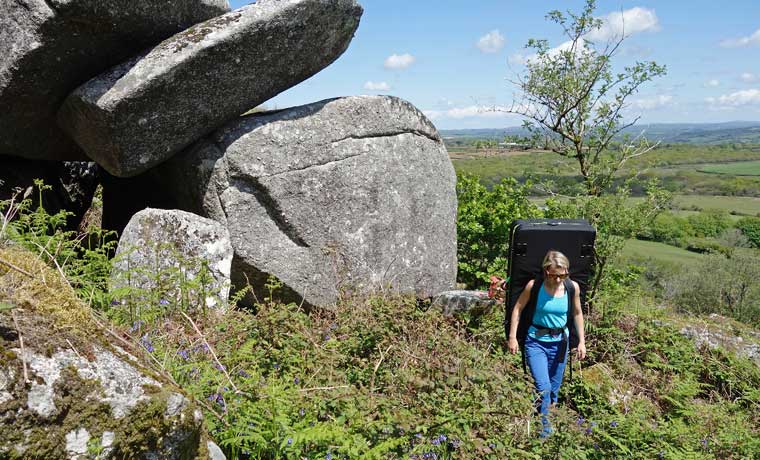
What is bouldering equipment?
Specialist bouldering gear is required, but thankfully there are only three essential items for the beginner to either buy, rent or borrow.

Climbing shoes
There is no need to get specialist bouldering shoes; a general climbing shoe will work perfectly well. And when you first put on a pair, you will be amazed at how much it helps your climbing. The stiffened rubber sole enables your feet to stick to the smallest edges. But be warned that they are meant to be a tight fit!

Chalk and chalk bags
Chalk gives your hands more friction by drying out the sweat. It is possible to climb without it, but you will be at a distinct disadvantage. The chalk is either carried behind you in a small bag hanging from a waist strap, so you can use it as you climb. Or it’s kept in a larger bag that stays on the ground and you just chalk up before you start.

Crash pads
Only needed for outdoor climbing, crash pads or mats come in a range of sizes, which can all be folded to fit into your car. Many also come with straps to carry it like a backpack. If your friends have grown tired of you scrounging theirs, and you wish to make a purchase, here’s a handy guide for you: best crash pads for bouldering.
Plus …
On the assumption that clothes aren’t always necessary (!) and you don’t have to climb in specialist bouldering clothing, they haven’t been included as essential items. But you will need something to keep you warm, especially as boulderers prefer cooler temperatures when the rock has more grip, so check out this helpful article: what to wear rock climbing.
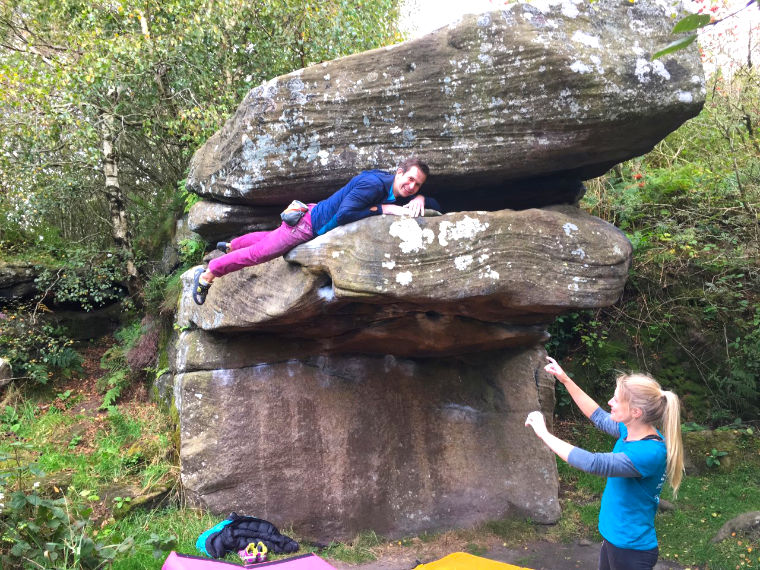
How to boulder: tips and techniques
Learning how to boulder, where to place your limbs and in what order to move them, often begins by simply giving it a go. Get on the wall or rock and, like children at the playground, start playing! As already discussed, observing others, and mimicking their methods, is also useful. But to help you on your way, here are a few pointers:
- Pay close attention to your feet, getting as much weight on them as possible. Your legs won’t tire as quickly as your arms.
- Drive up with your legs to gain height, then reach for the next hand hold.
- Don’t over grip with your fingers: apply as much pressure as necessary, but no more.
- Keep your hips close to the wall, especially on steeper problems.
- Let your inner ape take over: climbing is a natural activity, so don’t overthink it. Your body knows what to do, even if your mind doesn’t.
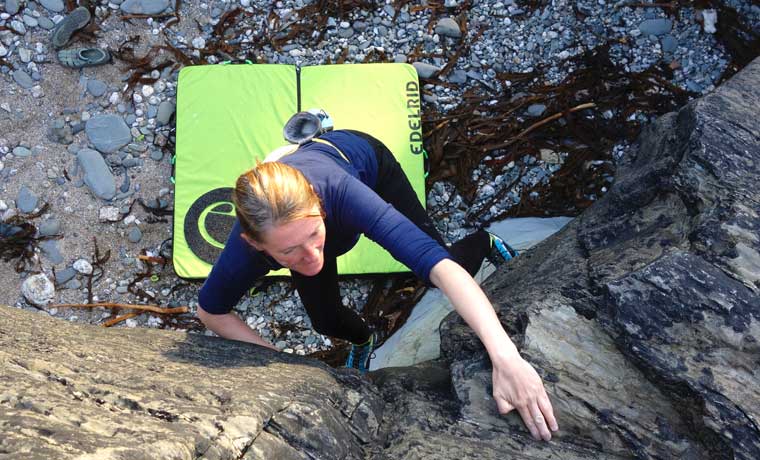
What is bouldering – final thoughts
Hopefully you now know what bouldering is, how it’s a type of climbing where you don’t go that high, you don’t need much equipment and you don’t have to go outdoors. But one where you still get to experience all the pleasures of moving your body ever upwards with grace, poise and controlled power … or with grunts and jerky lunges! Either way, it’s a wonderful activity with many inspirational benefits, so why not give it a go?


